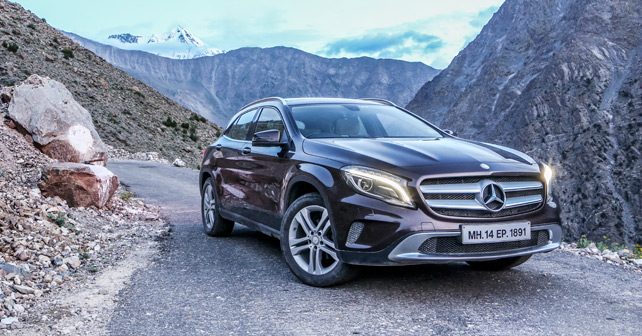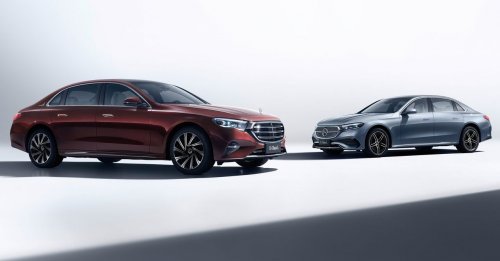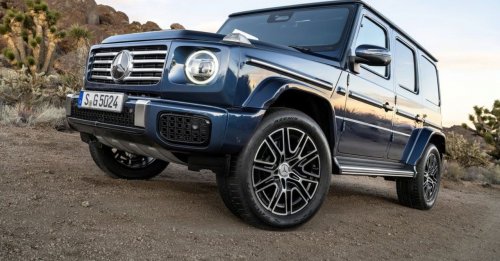
To celebrate 69 years of India’s independence, we embark on an expedition to pay homage to the men and women who have sacrificed their lives so that we may live ours.
In 1921, a young freedom fighter from Andhra Pradesh, Pingali Venkayya was on a special mission. Venkayya was designing a flag that was to be presented at the All India Congress Committee at its next session. The flag was red and green, which represented the two major communities in India – Hindus and Muslims. But when Mahatma Gandhi saw the flag, he added a third colour – white – to represent the remaining communities and religions that lived in India, and also added the spinning wheel at the centre. However, the flag was put on the backburner as the struggle for independence gained more vigour. Ten years later, a resolution was passed to adopt a new flag – and this time it was saffron, white and green, with the spinning wheel in the centre. As India inched closer to independence in 1947, the spinning wheel was replaced with the Ashoka Chakra, which is a 2,500-year old design. The three colours no longer had any communal undertones, and India finally had its national flag.
The tricolour’s true purpose and admiration is felt more strongly along the northern borders of the country, where our soldiers face hostile neighbours and an unforgiving terrain in which to protect our liberty and freedom. For these soldiers, the tricolour is their motivation, hope, faith, and purpose. Like the freedom fighters of yore, these courageous souls endure a life of sacrifice so that the citizens of our nation may live and prosper, peacefully and freely.
So, to celebrate India’s 69th year of freedom, we decided to embark on a special drive to pay homage to the people who fought for India and its freedom, and continue to do so. At 69, India is still a relatively young nation. So, we thought it was fitting to drive a car that reflects the aspirational values of a young and progressive country – and so the Mercedes-Benz GLA seemed to be the right choice.
Our plan seemed simple enough – drive to the major border posts in the country and pay our respects – and so we packed up and headed out on a 2,200-kilometre road trip to the northern international borders of India in Punjab, Jammu and Kashmir, and Himachal Pradesh.
Inquilab Zindabad
Shaheed Bhagat Singh was just 23 years old when he was executed in Lahore, but even at such a young age he was one of India’s most influential martyrs. His death caused widespread outrage across the country and served only to fuel the fire that was already burning in the hearts of young Indians – and his famous slogan “Inquilab Zindabad” became the rallying cry for Indian independence.
Bhagat Singh, along with fellow freedom fighters Sukhdev and Rajguru, were cremated at Hussainiwala – which became Pakistani territory after partition. However, in 1961, the area was transferred to India in exchange for 12 villages – and now the village of Hussainiwala is home to the National Martyrs Memorial, which was our first destination. Situated 460 kilometres from Delhi, it was the principal border crossing between India and Pakistan until 1970. It was also part of the war theatre during 1965 and 1971, and the names of all the Indian soldiers who lost their lives in those wars are inscribed in stone at the National Martyrs Memorial.
As we entered the memorial, we noticed that the fort – the original army post – still had bullet holes and the scars of battle. It was evident that it had been bombed. The walls have been left untouched to serve as a reminder of what occurred here. There are also pillars with famous quotes from heroic army generals. Of course, the statues of Bhagat Singh, Sukhdev and Rajguru are also present. The deep respect the local people have for these three freedom fighters is clearly evident. Scenes of people touching the feet of the statues, as a mark of respect, is commonplace – while entire families get their pictures taken with the statues as a token of remembrance. It shows an appreciation for the struggle, and the contribution of these brave souls – something a lot of us seem to have forgotten!
The Hussainiwalla border post also has a Retreat Ceremony everyday at 6pm. The ceremony is similar to the more popular one at Wagah, but here the attendees on both sides are situated at much closer proximity to each other and are seated facing each other. So, shouting matches take place between the two sides as they’re seated right across from one another. But, on both sides, attendees are waving and smiling at each other – perhaps realising the symbolic value of these ceremonies. The intensity of the soldiers on either side, however, is quite dramatic – and the high-kicks and foot stomping that ensues between the Indian and Pakistani soldiers is highly entertaining. The experience is electrifying, and as you see the tricolour flutter in the sunset, and hear the trumpets blowing, a sense reverence for the country sinks in and you realise that all of this is possible only because of the men and women who died at this very same spot. It was both beautiful and poignant at the same time.
Entertaining Wagah
Our next stop was the Wagah border, and so we left Hussainiwala in the evening and headed for Amritsar to spend the night. The morning after, we made our way to the BSF office and booked our seats for the Wagah ceremony. A common misconception is that Wagah is in India. But, in fact, Wagah is a village on the Pakistani side of the border. Whereas, on the Indian side, it’s called the Atari border – named after the village, Atari.
As we entered Atari, we were closer to Lahore – just 23 kilometres – than we were to Amritsar. The hordes of tourists meant that the scene was actually quite similar to that of a cricket match, as people from all walks of life from across the country lined up by the thousands with all manner of patriotic paraphernalia. Children, as well as a few foreigners, had the tricolour painted on their faces. Others danced outside the gates, and some ran around with the Indian flag held up high. It was great to see that we were not the only ones paying our respects to the forces. Many people spoke and took pictures with the brave men and women of the armed forces, and everyone had a happy, but proud, smile on their faces.
The Wagah ceremony was a grand spectacle. Here, the attendees on either side of the border don’t directly face one another – and so there’s no confrontation. But, the soldiers put on a show that really gives you goose bumps.
You can see it in their eyes, the Indian and Pakistani soldiers are full of patriotic fervour – and you pick up on a sense that they have a certain disdain towards one another. They stare at each other in a threatening manner, and try to kick higher and stomp harder than the other. They even try to shout louder, and take turns doing so. It is, of course, finely choreographed. Nevertheless, each has to appear tougher than the other. The ceremony takes place every single day, no matter what the weather conditions are like – and the intensity is the same every day! As the crowds continued to cheer and dance throughout the ceremony, the tricolour fluttered proudly as the sun began to set on the horizon.
The Heart of a Nation
After a good night’s sleep, we drove 250 kilometres up north to the village of RS Pura in Jammu and Kashmir. The drive took us along the beautiful countryside, and we met and saw some very interesting people. The fact that we were driving the Mercedes-Benz GLA through tiny villages certainly got us a lot of attention.
Situated on the border next to RS Pura is Suchetgarh village, which is the army post on the border. This post, however, is much more low key with very few visitors. We met with a few soldiers, and along with another family, they gave us a private escort all the way to the actual border – from where the Pakistani army posts were just a stone’s throw away. We could even see a Pakistani soldier monitoring our movements through a pair of binoculars.
The Indian soldiers here are very happy to meet with people, as they don’t get to partake in the excitement and action of Atari and Hussainiwala. The atmosphere here is calm and quiet, but that doesn’t mean that the service and dedication of the soldiers is any less. They are constantly alert and ready for action at any time. And, honestly, we preferred the calm of the RS Pura border post to both Hussainiwala and Wagah. It provides a better feel of a real border posts between countries that aren’t particularly friendly with one another. You could talk to the soldiers, and get a real world perspective on how things work and what the ground realities truly are. And the fact that we could go up to two actual border pillars (# 918 and 919) meant that the Pakistani side was literally an arms length away.
We even got a chance to look at one of the bunkers used by the Indian soldiers, and noticed that the so called ‘windows’ in the bunkers didn’t have panes – but rather solid shutters made of an iron sheet two-inches thick, designed to ensure that enemy fire doesn’t breach them.
After a long, and friendly, chat with the soldiers about their life at this outpost, we bid each other adieu and jumped back into the GLA to make our way to Jammu. The next day, we would have a long drive ahead of us. However, we couldn’t help but notice that the heart of the nation – the lifeline that really drives this country – is the hardworking Indian. Whether they’re soldiers, truck drivers, labourers, farmers, or students, the people we met in these small towns and villages were kind-hearted, warm, friendly, helpful, and generous.
Soaring High
Now, the hardest leg of our journey was about to begin. After visiting a few army posts along the Indo-Pak border, it was time to visit our brothers at the Tibet frontier – now the Indo-China border. All along, we had been driving the Mercedes-Benz GLA on straight highways – and it was a very comfortable ride, but now the real test lay ahead.
From Jammu, we headed southeast towards Pathankot, and then further south towards Palampur – before heading east towards Shimla. We were now in the Himalayas, and heading to the border post of Shipki La, which is situated at 18,599 feet above sea level. Along with the border post at Nathu La in Sikkim, Shipki La is a border post for trade with Tibet. But, before we could head there, we had to drive though most of Himachal. After a long day over various kinds of roads, we finally reached the town of Rampur. Of course, driving through the Himachal region at this time of the year meant that we were faced with a variety of conditions – heavy rainfall, fog, and slippery roads. However, the natural beauty of the state invigorated us for the rest of our journey – especially once we bypassed Shimla, as traffic thinned out and the scenery got more and more spectacular. The only hurdle was a small traffic jam just 7 kilometres short of our night halt because of road construction. After helping clear the mess, literally, we made it to Rampur and got a much-needed good nights’ sleep – in anticipation of the roughest leg of the journey coming up the following day.
The next day, we headed for the border and entered the Kinnaur district of Himachal – which has some of the most treacherous roads in the world. There’s no tarmac, and the roads are cut along the steep mountain slopes. The term road is an overstatement – while above you have massive rocks that are prone to landslides, and which could obliterate a moving car without even shifting trajectory, on the other side are huge drops straight into the fast-flowing Sutlej river. No sooner had this realization occurred that we drove straight past a road roller and drilling machine that had suffered a fatal blow from these harsh conditions.
Standing in the middle of this vast wilderness, completely at nature’s mercy, is when one realizes how brutal the conditions can be. If it weren’t for the armed forces, if one had the misfortune of getting stuck in these conditions, we don’t think there would be any help forthcoming for a long, long time. The terrain, overall, is very inhospitable but to give credit where it’s due, the GLA marched on without a fuss.
After a five-hour drive, we eventually reached the town of Reckong-Peo. On arrival, we were informed that non-Army personnel were – as of earlier that very day – strictly forbidden from the Shipki La border post. The closest we would be able to get would be the last village before the border post, which was Namgia. While we were gutted that we couldn’t go all the way, we decided to see just how far we could get. We had another flag to plant to conclude this patriotic expedition after all!
But, before that, the journey to Namgia was itself a challenge. Having spent nearly two hours trying to secure the elusive permission to Shipki La, we were running against time – and the conditions weren’t in our favour. So, we made a quick march towards the unfortunately named village of Pooh, hoping to make it to Namgia before nightfall. As we drove along these narrow mountain roads, with their serpent like qualities, we even crossed a clutch of waterfalls – causing awe and trepidation in equal measure.
At any point in time now, we could face a multitude of natural obstacles – washed out roads, bridges, landslides, falling rocks or just rain and foggy conditions. And we had absolutely no help available to us for miles on either side, in case we needed any kind of assistance – save for one of the most reliable pillars of our country, the armed forces.
However, despite the growing fatigue, fate was our side and we made the climb without a problem and came to within 10 kilometres of Shipki La with ample daylight still remaining. Having been on the road for five straight (and long) days, we finally planted the tricolour next to the GLA and just sat there and watched it sway in the strong winds against the backdrop of the mighty Himalayas. It was a beautiful sight, and for a brief moment we felt a sense of pride and achievement.
The backdrop was stark, the winds were strong, and the nearest signs of civilization were an unforgiving journey away. It quickly became apparent that the brave souls who are posted in these extreme environments have an unfathomable job. The high stress environment is one thing, but the conditions in these remote parts is something else altogether. One has to admire the passion and dedication of these selfless soldiers who put their lives on the line in these extreme conditions to ensure that the average citizen remains safe.
The other thing we were thankful for was the Mercedes GLA, as it had performed absolutely flawlessly through the long and, in parts, excruciating journey that had seen us cover thousands of kilometres on roads ranging from the sublime to the non-existent – while weather conditions went from bright sunshine to apocalypse-now. But, through all this, the GLA has been a comfortable, reliable and secure place to spend time in.
We made it to the village of Pooh for the night. During a good meal we had cause to introspect, and we realized why so many Empires had their eye on India. After all, we had travelled through some beautiful and varied landscape on this journey – and with its natural resources, fertile lands and mystic beauty, India is truly an incredible place. But more importantly, men and women with courage and conviction fought for her freedom and became heroes – but the unsung heroes are the men and women who continue to protect her and her citizens everyday, no matter the consequences. We salute them for their dedication to the spirit of freedom. It’s because of their sacrifice and courage that we get to enjoy everything that this wonderful country has to offer.
Video: Freedom Drive in a Mercedes-Benz GLA





































Write your Comment